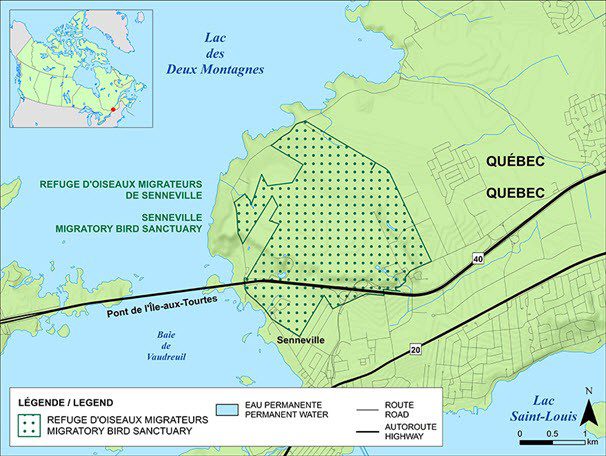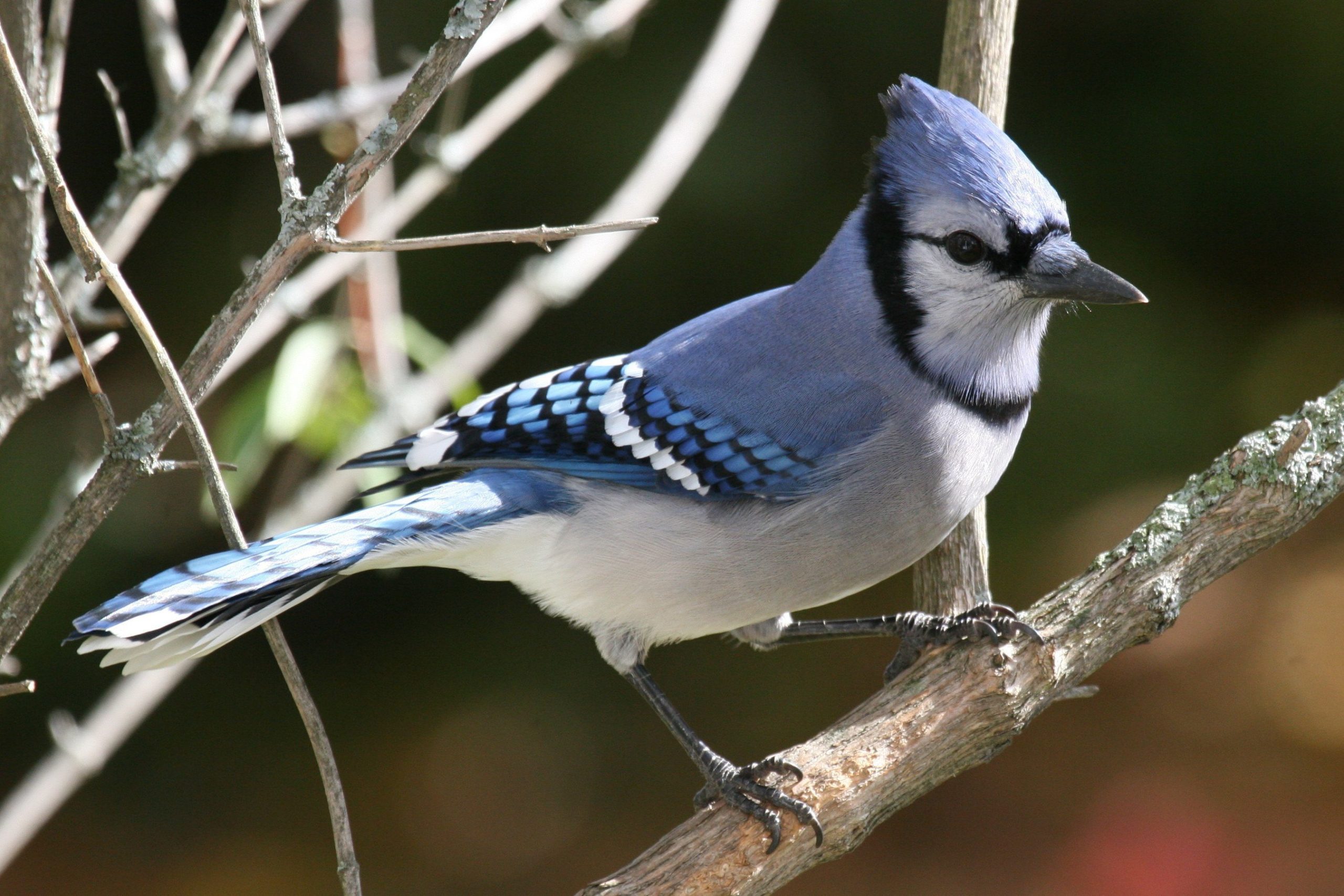Protected areas – birds
Migratory Birds
Your property may be located in Senneville’s migratory bird sanctuary, identified in the 1994 Migratory Birds Convention Act and the regulation on migratory bird sanctuaries.
If you plan on undertaking work on your property, it must be carried out without disrupting, harming or destroying migratory birds and their nests. The critical periods are nesting, breeding and migration. For these same reasons, it is forbidden to let a dog or cat circulate freely in a migratory bird sanctuary.
Interesting links:
- Guide for developing Beneficial Management Practices for Migratory Bird Conservation
- Quebec breeding birds atlas
- Maps of atlas regions and squares
- Calendar of nesting chronology
- Observed species
- Migratory birds regulations
- Migratory bird sanctuary regulations
Senneville Migratory Bird Sanctuary

Did You Know That Light Pollution Can Have a Negative Impact on Birds?
Light pollution is defined as the excessive or inappropriate use of artificial light, namely light beams directed towards the sky or horizon.
A large part of Senneville’s territory is included in the Senneville Migratory Bird Sanctuary.
Birds are essential to our planet’s ecology—and to local economies. Birds provide ecosystem services (pollination, seed dispersal and insect control), act as benchmarks for environmental health, increase livability, and connect people of all ages and abilities to the natural world.
Acting as sentinels of nature, birds are excellent indicators of environmental health. The study of birds enables us to learn about the general state of our ecosystems and the environment.
Impacts
High-set, bright, “cool” (white) lights pointing upwards at the sky disturb birds migrating at night: they can become disoriented, have difficulty warding off predators and finding their bearings in relation to the stars. As a result, their journey is lengthened, and they may become exhausted or collide with structures such as buildings. This can also cause them to deviate from their migratory path.
Light pollution can also upset birds’ biological clock and affect foraging. Birds confuse daybreak with artificial city light, becoming active earlier—singing in the middle of the night, for example.
In addition, we now know that the breeding calendar is also affected by light pollution: spring breeding is early for some birds, exposing them to the cold and scarcity of food.
Best practices
- Turn off lights after hours. Use timers or motion sensors to limit lighting to necessary times only.
- Keep lighting as low to the ground as possible. Direct lighting downwards, so that the area lit is as small as possible.
- Choose low-intensity lighting. Use dimmable LED lighting. In winter, low-intensity lighting prevents snow from reflecting too much light upwards. Limit lighting levels. As an example, level of 5 lux is sufficient to move around safely (lux = number of lumens per sq. meter).
- Choose warmer colors when designing permanent lighting installations. Programming warmer colored lighting (2000 to 3000 K) is best, namely near habitats. Favour red or amber bulbs outside homes.
*https://www.quebecoiseaux.org/fr/pollution-lumineuse


